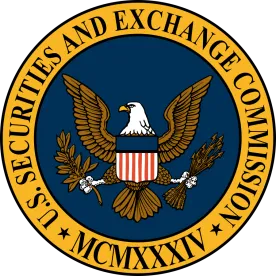On December 6, 2020, the Nasdaq Stock Market LLC filed a proposal with the Securities and Exchange Commission (SEC) seeking approval of new Nasdaq listing rules that are aimed to promote greater gender, racial and LGBTQ diversity among boards of directors of Nasdaq-listed companies.
Nasdaq’s submission to the SEC references a number of internal and third-party studies as well as other information and data that, in the view of Nasdaq, thoroughly justify the importance of and need for the new proposed rules. Nasdaq made the following statements, in addition to claiming other benefits, in support of the proposed rules:
- “The benefits to stakeholders of increased diversity are becoming more apparent and include an increased variety of fresh perspectives, improved decision-making and oversight, and strengthened internal controls.”
- “The heightened investor focus on corporate diversity and inclusion efforts demonstrates that investor confidence is undermined when a company’s boardroom is homogenous and when transparency about such [diversity] efforts is not transparent.”
- “Nasdaq further believes that a listing rule designed to encourage listed companies to increase diverse representations on their boards will result in improved corporate governance, thus strengthening the integrity of the market, enhancing capital formation, efficiency, and competition, and building investor confidence.”
Nasdaq acknowledged that the national social justice movement has brought heightened attention to the importance of diversity and inclusion, which had previously been underscored by controversies arising from corporate culture and human capital management challenges, as well as technology-driven changes to the business landscape. In its rule proposal, however, Nasdaq did not focus on the social desirability of breaking through the boardroom glass ceiling. Instead, consistent with its mission, Nasdaq undertook a far-ranging study of the potential impacts of this initiative, both on the market that it regulates and on board dynamics of the companies that are listed on its exchange. As noted above, it concluded that companies and markets would be well served by enhancing their efforts to identify and promote to board service a diverse group of candidates.
Although the SEC submission was lengthy, the diversity rules are only 12 pages, including a proposed “board diversity matrix” developed by Nasdaq that would require each Nasdaq-listed company to disclose specific diversity statistics regarding the composition of its board of directors. Here are the highlights of the proposed rules:
- All Nasdaq-listed companies are covered by diversity rules. All Nasdaq-listed companies, including foreign issuers, would be required to disclose board-level diversity using the specific board diversity matrix format that the Nasdaq has developed. [1]
- Diversity statistics must be based on director self-identification. The diversity information disclosed by the company would be required to come from the director. Individual directors would have the right to opt out of disclosing their gender, their race or whether they are LGBTQ. In such event, the company would be required to report such director in the “Gender Undisclosed” (i.e., if a director elects not to disclose his or her gender) and/or the “Undisclosed” (i.e., if a director elects not to identify as any race or as LGBTQ) category. Many companies are including a question or series of questions in their annual Directors & Officers Questionnaire to elicit diversity information from each director and officer, with an option to not self-identify.
- Public disclosure of board diversity is required. Public disclosure of the information would be required in the company’s proxy or information statement or on the company’s website (with a URL link to the information submitted through Nasdaq’s Listing Center within 15 calendar days of the company’s annual shareholder meeting).
- Boards must either satisfy the diversity “requirement” or disclose why they cannot meet that requirement. Rather than mandating board diversity, Nasdaq elected to exert pressure on companies to become more inclusive by proposing a requirement that, in addition to public disclosure of their board diversity statistics (discussed above), a Nasdaq-listed company would either need to satisfy a minimum number of diverse directors (discussed in more detail below) or publicly disclose why it does not have the requisite diversity.
The following is some additional information relating to the proposed rules in Q&A form. Additional information regarding the proposal can be found on Nasdaq's FAQs.
How does Nasdaq’s proposal define a “diverse” board?
In order to be “diverse” under the proposed rules, the company’s board would need to have at least one director who self-identifies as female, and one other director who self-identifies as an underrepresented minority or LGBTQ, with more flexibility provided to smaller reporting companies and foreign issuers.[2]
How does Nasdaq’s proposal define “underrepresented minorities”?
An individual who self-identifies as Black or African American, Hispanic or Latinx, Asian, Native American or Alaska Native, Native Hawaiian or Pacific Islander, or who claims two or more races or ethnicities, is considered an underrepresented minority.[3]
Are there any exempt companies?
Certain companies are exempt from the requirements of the rule — specifically, certain kinds of acquisition companies, asset-backed issuers and other passive issuers, limited partnerships, and management investment companies.
What is the proposed effective date, and is there a transition period?
The proposed rules require that all Nasdaq-listed companies either have at least one diverse director no later than two years after SEC approval of the proposed rules or include disclosure explaining why the company does not have a diverse director.
Then, the additional phase-in period for full compliance with the proposed rules depends on the Nasdaq market in which a company is listed. If listed on the Nasdaq Global Select or the Nasdaq Global Market tier, a company has four years from SEC approval of the rule to meet the applicable requirement regarding two diverse directors. If listed on the Nasdaq Capital Market tier, a company has five years to meet that requirement.
What are the consequences of failing to comply?
If a company does not have the required minimum number of diverse directors and fails to make the required disclosure explaining why it does not meet the diversity requirement, the rules propose that Nasdaq’s Listing Qualifications department would promptly notify the company of the deadline to cure the deficiency: the later of its next annual meeting or 180 days from the event that caused the deficiency. The company would be able to cure the deficiency either by nominating additional directors so that it satisfies the diversity requirement or by providing the required disclosure.[4]
[1] Note that this board diversity matrix approach is similar to the “Demographic Background” portion of the sample board matrix published by the Office of New York City Comptroller as part of the Boardroom Accountability Project 2.0 initiative launched in September 2017 (see https://comptroller.nyc.gov/wp-content/uploads/2017/09/Example-Board-Matrix.pdf), which some companies have adopted in some form in their proxy statement disclosure.
[2] Smaller reporting companies and foreign issuers are not exempt from having a diverse board, but may satisfy the requirement by having one self-identified female on the board, and one other board member who self-identifies as (i) female, (ii) an underrepresented minority or (iii) LGBTQ. In short, both smaller reporting companies and foreign issuers can have a diverse board by virtue of having two female directors.
[3] The definition of “underrepresented minority” is consistent with the categories reported to the Equal Employment Opportunity Commission (EEOC) through the Employer Information Report EEO-1 Form.
[4] If a company does not regain compliance within the applicable cure period, the company would be subject to the Nasdaq delisting procedures, with the applicable appeal right.





 />i
/>i

